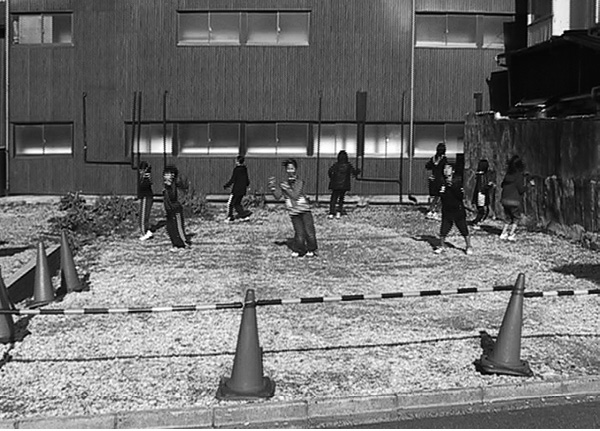
THE LORENZETTI PLAYERS
first performed on
March 11, 2011
Yahata-Higashi ward, Kitakyushu, Japan
performed once in 2011
STEVEN CHODORIWSKY
Maastricht, The Netherlands
090360313s090360313t090360313e090360313v090360313e090360313n090360313.090360313c090360313h090360313o090360313d090360313o090360313r090360313i090360313w090360313s090360313k090360313y090360313@090360313g090360313m090360313a090360313i090360313l090360313.090360313c090360313o090360313m
steven.chodoriwsky@gmail.com
THE LORENZETTI PLAYERS
STEVEN CHODORIWSKY
“Are we allowed to dance here, now?” is not a question that was asked.
“The Lorenzetti Players” deals with problems of citizenship and obliviousness. It was performed by a hip-hop dance troupe composed of ten Japanese girls aged 8-13; and three dance-instructor/parent-chaperones. The central motivation was to devise a series of events over a single afternoon for disrupting the mild melancholia of a youth-less neighborhood.
The social and spatial context for the piece was the steady decline of a neighborhood “low-town” in a ward of Kitakyushu, known to have one of the highest average ages of any area in Japan. Recently it has been custom to remove old, uninhabited houses from the labyrinthine low-town, resulting in pockets and gaps between remaining houses, a glut of formal and informal parking spots, and exposing the craggy sides of architecture never meant to be seen. It’s also, paradoxically, eased claustrophobia, letting light into corners where clandestine weeds grow; and the built form, while differing in material and building custom, shares a spatial porosity with an Italian mountain town.
During the two-and-a-half-hour meandering dérive through the neighborhood, performers were asked to find a comfortable space in the empty lots, and act as they pleased. However, as a troupe they knew only one, collective, choreographed routine, so in each space, over and over again, they repeated the routine (in silence, in lieu of boombox): under an orange tree, around a car or in front with a window.
The central aesthetic concern (or conceit) of the piece was to attempt to reenact a specific scene in a 700-year-old allegorical fresco halfway around the world-_Effects of Good Government on Town and Country_, by Ambrogio Lorenzetti-where ten youths dance a tripudium in a swirl of limbs. The obliviousness of dancers dancing for themselves.
Here the dancers “play” Lorenzetti’s fresco’s dancers, but there’s a deep disjunction between their aggressive gyrations, imported imitations from America, and the hollowed out backdrop that they vacate, in their pure precociousness, almost as quickly as a parked, idling automobile. Language gap, age gap, gaps in musical taste, gaps in upbringings, gaps in between instruction and disobedience, gaps between loud and quiet with no desire to bridge them.
Nevertheless, I’ve read that Renaissance scholars surmise that it is in fact from the dancers’ very spot that the light emanates.